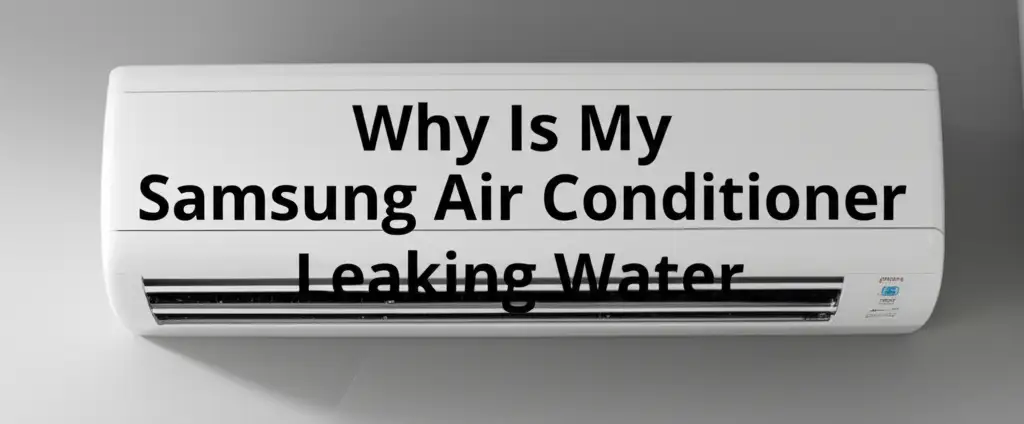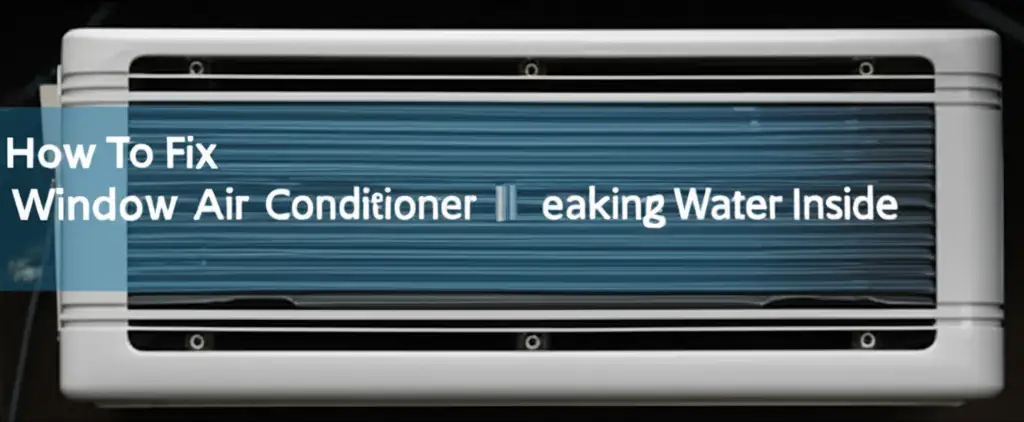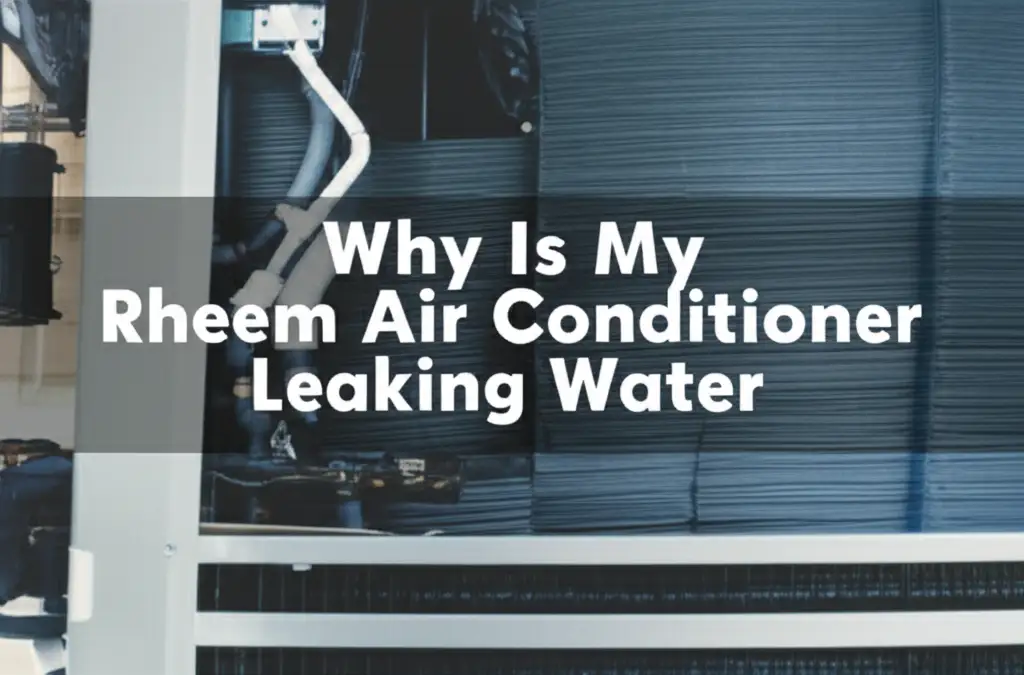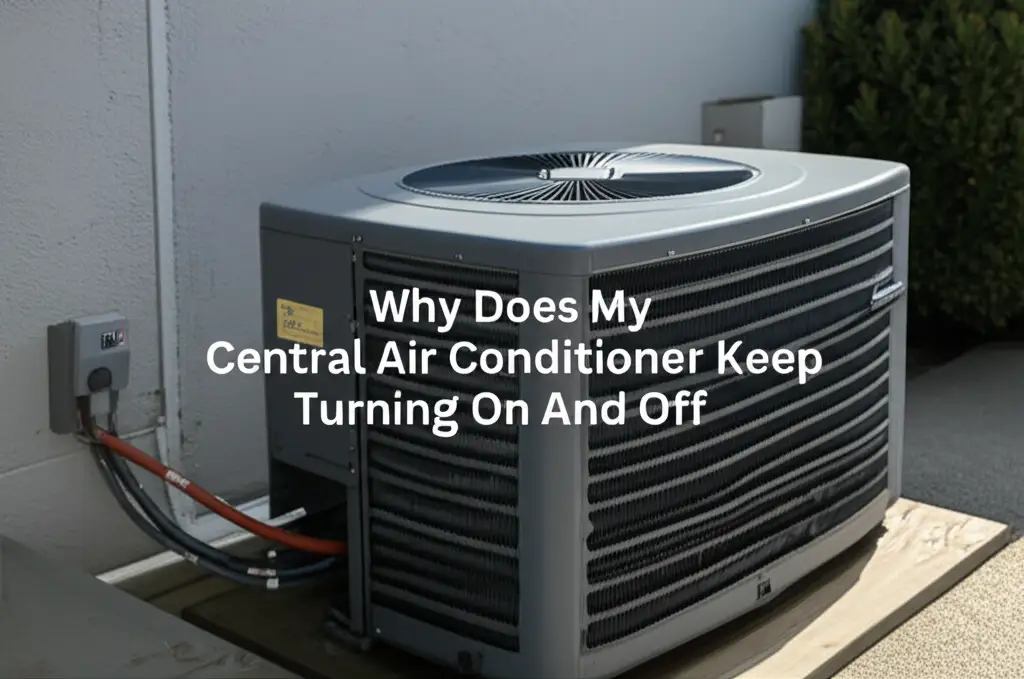· Katria Melrose · Home Maintenance · 17 min read
Why Is My Samsung Air Conditioner Leaking Water

Why Your Samsung AC Leaks Water
Finding water pooling around your Samsung air conditioner can be quite alarming. You expect cool, dry air, not a puddle on your floor or wall. This issue often signals a problem with your unit’s internal components or how it handles condensation. Understanding the common reasons why your Samsung air conditioner is leaking water helps you troubleshoot effectively.
A leaking AC unit can cause damage to your home and reduce cooling efficiency. It is important to address these leaks promptly. This guide will walk you through the primary causes of water leaks in Samsung air conditioners. We will provide clear, actionable steps you can take to diagnose and fix the problem.
Takeaway
- Check the Air Filter: A dirty filter restricts airflow, causing coils to freeze and melt.
- Inspect the Condensate Drain Line: Clogs in this line prevent water drainage, causing overflow.
- Look for Frozen Evaporator Coils: Insufficient airflow or low refrigerant can freeze coils, leading to a large melt-off.
- Assess the Drain Pan: Cracks or blockages in the pan stop it from collecting water.
- Verify Proper Installation: Incorrect unit tilt or refrigerant levels cause issues.
- Monitor Humidity Levels: High indoor humidity increases condensation, potentially overwhelming the system.
A Samsung air conditioner leaks water primarily due to issues with its condensation management system. Common causes include a clogged condensate drain line, a dirty air filter leading to frozen evaporator coils, a cracked drain pan, improper installation, or low refrigerant levels. Addressing these issues often stops the leak.
Common Reasons Your Samsung Air Conditioner Is Leaking Water
When your Samsung air conditioner starts dripping water, it is usually a sign that something is wrong with its drainage system or how it processes moisture. Air conditioners work by removing humidity from the air, and this moisture collects as condensation. The unit then drains this water away. If this process fails, water appears where it should not. Let’s look at the most frequent culprits behind a leaky Samsung AC unit.
Clogged Condensate Drain Line
One of the most frequent reasons your Samsung air conditioner leaks water is a clogged condensate drain line. This line carries water, or condensate, away from your AC unit. Over time, algae, mold, dirt, or even insects can build up inside the drain line. This blockage prevents the water from flowing out.
When the drain line is clogged, the condensate pan fills up. Once the pan overflows, water spills out of your unit. You might see water dripping from the indoor unit or along the wall. Clearing this clog often solves the problem.
To clear a clog, you can try flushing the line. First, turn off your AC unit at the thermostat and the circuit breaker. Locate the condensate drain line, usually a PVC pipe. You can often clear minor clogs by pouring a mixture of distilled vinegar and water into the access port. This mixture helps break down mold and algae. If the clog is severe, you might need a wet/dry vacuum to suction out the blockage. For more general AC issues, understanding how different units can leak is helpful, such as when a central air conditioner is leaking water inside.
Dirty Air Filter Causing Frozen Coils
A dirty air filter is a major contributor to AC problems, including water leaks. The air filter traps dust, dirt, and allergens from the air before it enters the system. When the filter becomes heavily soiled, it restricts airflow over the evaporator coils. This reduced airflow causes the coils to get too cold.
The evaporator coils need warm air passing over them to work correctly. If the airflow is too low, the coils cannot absorb enough heat. They then become excessively cold and freeze. Ice forms on the coils, much like frost in a freezer.
When your AC unit cycles off, or if the ice becomes too thick, this ice melts. It creates a large volume of water. The condensate pan cannot handle this sudden influx of water, leading to an overflow. Regularly checking and changing your air filter prevents this issue. You can also learn how to clean an air conditioner to maintain overall system health.
Damaged or Overflowing Drain Pan
The condensate drain pan collects water dripping from the evaporator coils. This pan sits directly beneath the coils. Its job is to hold all the water before it goes into the drain line. If this pan is damaged or has issues, water will leak.
Sometimes, the drain pan can crack or rust. Over time, metal pans might corrode, or plastic pans might become brittle. A crack in the pan means water will drip directly out of the unit. You will see water pooling around the base of your indoor unit.
An overflowing drain pan indicates a larger issue. This typically points back to a clogged drain line or frozen evaporator coils. When the pan overflows, it cannot hold any more water. This water then spills out. Inspecting the drain pan for cracks or signs of overflow helps pinpoint the problem. Replacing a damaged pan is a straightforward fix.
Low Refrigerant Levels
Refrigerant is the substance that cools your home. It absorbs heat from the air inside and releases it outside. If your Samsung air conditioner has low refrigerant levels, it cannot properly cool the evaporator coils. This lack of proper cooling makes the coils too cold.
When coils get too cold due to low refrigerant, ice forms on them. This is similar to what happens with a dirty air filter, but the cause is different. Low refrigerant often indicates a leak in the refrigerant lines. This requires a professional to fix.
As the ice on the coils melts, it produces more water than the drain pan can handle. This causes the pan to overflow. If you suspect low refrigerant, contact a certified HVAC technician. They can detect leaks, repair them, and recharge your system with the correct amount of refrigerant.
Improper Installation or Unit Leveling
The way your Samsung air conditioner is installed greatly affects its performance. Proper installation ensures efficient drainage of condensation. If the unit is not perfectly level, water may not flow correctly into the drain pan. This leads to leaks.
For wall-mounted indoor units, the installer must angle them slightly. This subtle tilt ensures that gravity pulls the condensate water towards the drain opening. If the unit tilts the wrong way, or if it is completely level, water can sit in the pan. This stagnant water can eventually overflow.
Incorrect sizing of the unit for your space also impacts performance. An oversized unit may cycle on and off too frequently. This rapid cycling does not allow enough time for water to drain properly. It can also cause humidity issues. A professional installation ensures the unit is level and correctly sized for your needs. Addressing these installation problems helps stop air conditioner leaks.
High Humidity or Extreme Weather
High humidity in your environment can put extra strain on your Samsung air conditioner. The AC unit’s job is to remove moisture from the air. When the air is exceptionally humid, the unit collects much more condensation than usual. This increased volume of water can sometimes overwhelm the system.
If the condensate drain line or pan cannot handle the higher volume of water, it may overflow. This is especially true during very muggy summer days or during periods of heavy rain. The unit works harder to dehumidify, creating more water.
Extreme weather changes, like sudden temperature drops, can also cause problems. If the outdoor temperature drops significantly while the AC is running, the coil temperature can also drop. This might lead to freezing, even if the refrigerant levels are normal. Monitoring humidity levels indoors and ensuring proper ventilation can help your AC manage condensation better.
Malfunctioning Condensate Pump
Some Samsung air conditioners, especially those installed in basements or areas without a direct gravity drain, use a condensate pump. This pump lifts the collected water from the drain pan and moves it to an outdoor drain or utility sink. If this pump malfunctions, water will not drain.
A condensate pump can fail for several reasons. It might be clogged with sludge, the motor could burn out, or the float switch might get stuck. The float switch tells the pump when to turn on. If it fails, the pump will not activate.
When the condensate pump stops working, water quickly fills the drain pan. It then overflows, causing a leak. You might hear the pump humming but not moving water. Or, you might not hear it activate at all. If your system has a condensate pump, check its operation. Clearing debris from the pump reservoir or replacing a faulty pump usually solves this leak.
Steps to Diagnose and Fix a Leaking Samsung AC
When you notice your Samsung air conditioner leaking water, do not panic. Most common causes are fixable with some DIY effort. Always prioritize safety first. Turn off your AC unit before attempting any inspection or repair.
Here is a step-by-step guide to help you find the problem and fix it. Remember, if you feel uncomfortable or the problem persists, calling a professional HVAC technician is always the best choice.
1. Turn Off the Power
This is the most crucial first step. Before touching any part of your air conditioner, ensure it has no power. Go to your thermostat and set the system to “Off.” Then, find your home’s circuit breaker box. Locate the breaker switch labeled for your air conditioner unit and flip it to the “Off” position. This prevents any electrical hazards while you work on the unit. Safety comes first when dealing with appliances like this.
2. Check and Clean the Air Filter
A dirty air filter is a common culprit. I usually start here because it is simple to check. Locate the air filter slot on your indoor unit. Remove the old filter. If it looks clogged with dust and debris, it is likely restricting airflow.
Replace a disposable filter with a new one. Ensure you use the correct size and MERV rating for your Samsung unit. If your filter is reusable, you can clean it according to the manufacturer’s instructions. Some filters can be cleaned with water, but always check your model’s guidelines. Changing the filter every 1-3 months prevents many issues.
3. Inspect and Clear the Condensate Drain Line
This line is responsible for carrying condensed water away. Look for a PVC pipe coming out of your indoor unit, often leading outdoors. Check for visible clogs at the exit point.
Inside, locate the condensate drain pan. You will see the opening for the drain line. If there is standing water in the pan, the line is likely clogged. You can try to clear the clog. For minor clogs, pour a cup of distilled white vinegar down the drain line access port. Let it sit for 30 minutes, then flush with water. For tougher clogs, a wet/dry vacuum connected to the outdoor end of the drain line can suction out debris.
4. Examine the Condensate Drain Pan
After clearing the line, inspect the drain pan itself. The pan collects all the water. Check for any cracks or damage. Small cracks can cause water to drip. If you find cracks, the pan needs replacement.
Also, check for debris inside the pan. Slime, mold, or rust can accumulate. Clean the pan thoroughly with a mild bleach solution or vinegar and water. Make sure the drain opening is completely clear. A clean pan ensures water flows freely into the drain line.
5. Look for Frozen Evaporator Coils
If your AC is leaking and not cooling well, check the evaporator coils. These are inside the indoor unit. Turn off the unit and open the access panel. If you see ice buildup on the coils, they are frozen.
Frozen coils indicate a serious airflow problem or low refrigerant. Let the coils thaw completely before running the unit again. This can take several hours. Once thawed, check your air filter again to ensure it is clean. If freezing persists after cleaning the filter, it could point to low refrigerant. Low refrigerant requires professional help.
6. Check Refrigerant Levels (Professional Only)
You cannot check refrigerant levels yourself. This requires specialized tools and training. If you suspect low refrigerant (e.g., coils are freezing, the unit is not cooling efficiently), it means you likely have a leak.
Contact a certified HVAC technician. They will test the refrigerant levels, find any leaks, repair them, and then recharge the system. Do not attempt to add refrigerant yourself. This can cause more damage and is against environmental regulations.
7. Verify Unit Leveling and Installation
This step is more for a professional or if the leak has been persistent since installation. An improperly leveled indoor unit can prevent proper drainage. Use a spirit level to check if your indoor unit is perfectly level or slightly sloped towards the drain.
If the unit is new and leaking, it strongly suggests an installation error. Contact your installer or an HVAC professional to re-level the unit. Proper leveling ensures gravity correctly guides water into the drain pan and line.
8. Address High Humidity Issues
If your area experiences high humidity, your AC works overtime to remove moisture. This can lead to increased condensation. Consider using a dehumidifier in conjunction with your AC, especially during peak humidity.
Ensure your home is properly sealed to prevent excess moisture from entering. Check for leaks around windows and doors. Good insulation also helps manage indoor humidity. Proper humidity control lightens the load on your AC.
When to Call a Professional
While many common leaks can be fixed with DIY methods, some situations require expert intervention. Knowing when to call a professional saves you time, prevents further damage, and ensures your Samsung air conditioner operates safely.
You should call a professional HVAC technician if:
- You suspect a refrigerant leak: This is a hazardous issue. Refrigerant leaks are harmful to the environment and require specialized equipment to detect and repair.
- The leak persists after basic troubleshooting: If you have cleaned the filter, cleared the drain line, and checked the pan, but the leak continues, a deeper problem exists.
- You hear unusual noises: Grinding, hissing, or buzzing sounds could indicate serious mechanical issues.
- The unit is not cooling effectively: A lack of cooling, combined with a leak, suggests a major system fault.
- You see ice on the outdoor unit: This is a sign of severe operational problems, not just condensation.
- You are uncomfortable performing the repair: If you do not have the right tools or feel unsure, it is safer to call an expert.
Professional technicians have the expertise to diagnose complex issues. They can access parts of the unit you cannot easily reach. They also carry specialized tools for tasks like refrigerant charging or component replacement. Investing in professional service can extend your AC’s lifespan.
Maintaining Your Samsung AC to Prevent Leaks
Preventing water leaks in your Samsung air conditioner is far easier than fixing them. Regular maintenance keeps your unit running efficiently and reduces the likelihood of breakdowns. I strongly recommend creating a routine maintenance schedule. This proactive approach saves you money on repairs and prolongs the life of your AC.
Here are key maintenance steps you can take:
- Regular Filter Replacement: This is the simplest yet most effective maintenance step. Change your air filter every 1-3 months. If you have pets or allergies, change it more often. A clean filter ensures good airflow, preventing frozen coils and excessive condensation.
- Annual Drain Line Flush: Once a year, flush your condensate drain line with a diluted vinegar solution. This prevents algae and mold buildup. It keeps the line clear and free-flowing. You can do this at the start of the cooling season.
- Keep Coils Clean: Over time, evaporator and condenser coils collect dirt and grime. Dirty coils reduce efficiency and can lead to freezing. You can gently clean the evaporator coils with a soft brush and coil cleaner. For condenser coils (outdoor unit), spray them with a hose to remove debris. Avoid bending the fins.
- Clear Outdoor Unit Debris: Keep the area around your outdoor unit clear of leaves, grass clippings, and other debris. Obstructions block airflow, making the unit work harder. Ensure at least two feet of clear space around the unit.
- Check Drain Pan Regularly: Periodically inspect the condensate drain pan for cracks or rust. Clean out any sludge or standing water. A clean, intact pan is vital for proper water collection.
- Schedule Professional Tune-Ups: Hire a professional HVAC technician for an annual tune-up. They will check refrigerant levels, inspect electrical components, lubricate moving parts, and thoroughly clean the system. This proactive check-up can identify minor issues before they become major leaks. They can ensure your unit is properly leveled and all connections are secure.
By following these maintenance tips, you can significantly reduce the chances of your Samsung air conditioner leaking water. Regular care ensures your unit runs smoothly, keeping your home cool and dry for years to come.
FAQ Section
Q1: How much does it cost to fix a leaking Samsung air conditioner? A1: The cost to fix a leaking Samsung air conditioner varies. It depends on the cause. A simple fix like cleaning a clogged drain line might cost $75-$250. Replacing a damaged drain pan could be $100-$300. More complex issues, like a refrigerant leak or professional thawing of coils, could range from $200-$1000 or more, depending on the severity and required parts.
Q2: Can I use my Samsung AC if it’s leaking water? A2: No, you should turn off your Samsung AC immediately if it is leaking water. Continuing to run a leaking unit can cause further damage to the air conditioner itself. It can also lead to water damage to your walls, floors, or electrical components, creating a safety hazard. Always turn off power at the breaker before investigating.
Q3: How often should I clean my Samsung AC drain line? A3: You should clean your Samsung AC condensate drain line at least once a year. The best time is typically at the beginning of the cooling season. If you live in a very humid climate or notice frequent clogs, you might need to clean it more often, perhaps every six months. Regular flushing prevents mold and algae buildup.
Q4: Is a Samsung AC water leak covered by warranty? A4: Warranty coverage for a Samsung AC water leak depends on the specific cause and your warranty terms. Most manufacturer warranties cover parts defects. They typically do not cover issues caused by lack of maintenance, such as a clogged drain line or dirty filter. Check your Samsung warranty documentation or contact Samsung customer service for details.
Q5: Why do my Samsung AC coils freeze, causing a leak? A5: Samsung AC coils freeze primarily due to insufficient airflow or low refrigerant levels. A dirty air filter is the most common cause of restricted airflow. Low refrigerant levels indicate a leak in the system, which causes the coils to get too cold and form ice. As the ice melts, it overflows the drain pan, leading to a leak.
Q6: Can a faulty installation cause a Samsung AC to leak? A6: Yes, a faulty installation is a common cause of Samsung AC leaks. If the indoor unit is not installed perfectly level, or if it is tilted incorrectly, the condensation will not drain properly into the pan and line. This leads to water overflowing from the unit. Incorrect refrigerant charging during installation can also cause issues.
Conclusion
Discovering your Samsung air conditioner is leaking water can be frustrating, but understanding the common culprits empowers you to address the problem effectively. From a simple clogged drain line to a dirty air filter causing frozen coils, most leaks stem from manageable issues with condensation or airflow. We have explored causes like damaged drain pans, low refrigerant, improper installation, and high humidity, providing clear steps for diagnosis and repair.
Remember, prompt action saves you from further damage and costly repairs. Regular maintenance, such as cleaning your air filter and flushing the drain line, significantly reduces the risk of leaks. If you face persistent leaks or complex problems like suspected refrigerant issues, do not hesitate to call a certified HVAC professional. They have the tools and expertise to ensure your Samsung AC runs efficiently and leak-free, keeping your home cool and comfortable.





